Blackrock
Houses within 15km of this house
Displaying 65 houses.
Houses within 15km of Blackrock
Displaying 65 houses.
| House name | Description | |
|---|---|---|
| Rockingham | Sir Robert King, Viscount Lorton, built Rockingham House around 1810 and the family moved there from King House in Boyle. At the time of Griffith's Valuation Rockingham was valued at £180. In 1903 Rockingham became the county residence of the Lord Lieutenant Lord Dudley. It was destroyed by fire in 1957 and subsequently demolished. Only some of the servants' tunnels as well as other estate buildings remain. The site is now occupied by Lough Key Forest Park. |

|
| Ballynashee Lodge [Geevagh Lodge] | At the time of Griffith's Valuation Michael Keogh owned Ballynashee Lodge, valued at £22. In 1906 George Keogh was the owner of the mansion house at Ballynashee valued at £22. Lewis also records this house as a seat of the Keogh family in 1837. It is labelled Ballynashee Lodge on the 1st edition Ordnance Survey map but as Geevagh Lodge on the later 25-inch edition of the 1890s. A later building is still extant at the site. | |
| Annagh Lodge | At the time of Griffith's Valuation, Thomas Whitney was leasing a house valued at £12 to Edward Frazer, at Aughnacloy, barony of Tirerrill. In 2006 Annagh Lodge was offered for sale by Raymond Potterton estate agents, in county Meath. The house details claim that Annagh Lodge was built by the Frazer family (from Scotland), around 1800. McTernan, however, notes that the house was reputedly built by a landlord named Hewitson. |

|
| Alderford | At the time of Griffith's Valuation Alderford was leased by the representatives of William F. McDermottroe to Catherine Thompson and was valued at £25. In 1814 it was the seat of Thomas McDermottroe. Lewis also records it as the seat of the latter in 1837. Alderford is famous for its associations with Turlough O'Carolan, the Irish harper, as he died there in 1738 and is buried nearby in Kilronan. This house, however, was built in the early 19th century. It was the seat of Thomas Charles McDermottroe in 1894. It is still extant but in a dilapidated condition. |

|
| Kilronan Castle/Castle Tennison | The house presently occupying this site was constructed in the later 19th replacing an earlier house which had been built c.1820. At the time of Griffith's Valuation the house had been valued at £70 and was occupied by Edward King Tenison. In 1814 it was the seat of Thomas Tennison and is recorded by Lewis as the seat of Col. Tenison. In 1894 Slater referred to it as a residence of the Earl of Kingston. The building is still extant and in 2006-7 was converted into a luxury hotel. For more information on Kilronan Castle see www.kilronancastle.ie. |
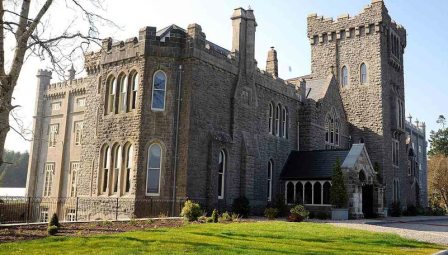
|
| Jamestown House or Jamestown Lodge | At the time of Griffith's Valuation Hugh O'Beirne was occupying a house at Jamestown, barony of Leitrm, valued at £40. Jamestown House was held by the O'Beirne family until the twentieth century though in 1894 Slater refers to it as the seat of Gilbert King, junior. In 1906 it was also valued at £40. It is still extant and occupied. |

|
| Strandhill | At the time of Griffith's Valuation Patrick Buchan was leasing a property valued at £12 at Lecarrow or Strandhill, barony of Dromahaire, from James Fawcett. Lewis records Strand Hill as a seat of the Fawcett family in 1837. | |
| Corry Lodge | At the time of Griffith's Valuation the house at Cavan, known as Corry Lodge, was owned by Francis N. Cullen and was valued at £12. In 1859 when the property was being sold it was claimed that the house had cost £1500 to build. It was the suject of a sale notice again in 1876 when the house was described as having 3 reception rooms and 5 good bedrooms. | |
| Mount Campbell | Josias Rowley was leasing the property at Mount Campbell, valued at £35, to William A. Lawder at the time of Griffith's Valuation. Slater refers to it as the seat of William S. Lawder in 1894. In 1906 William Rowley owned the mansion at Mount Campbell valued at £40. The house is no longer extant. |
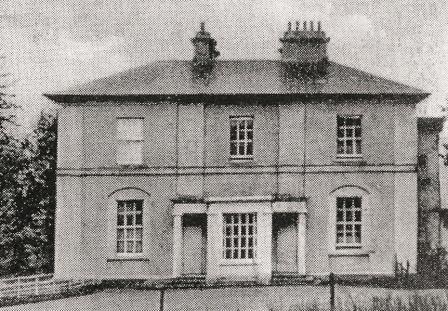
|
| Lismoyle | At the time of Griffith's Valuation Francis Waldron was the owner of a property valued at £12 at Lismoyle, barony of Leitrim. A house still exists at this site. | |
| Laheen | In the 1780s both Taylor and Skinner and Wilson recorded Laheen as a seat of the Peyton family. Lewis also records it as a Peyton residence. At the time of Griffith's Valuation it was being leased by Richard Peyton to Michael Fitzgerald and was valued at £15. The original Laheen house is not extant though a house and extensive farm buildings remain at the site. | |
| Hatley Manor | This house was built c. 1830. At the time of Griffith's Valuation Charles St. George was leasing it to Diana Faris. It was later inherited by the Whyte family of Newtown Manor and is recorded by Slater as the seat of Charles C. Beresford Whyte in 1894. It is still extant and had been in use by the Bank of America. In April 2007 it was offered for sale. |

|
| Castlecarra (Leitrim) | This house was occupied by the Peyton family later in the 19th century. In 1814 it was the address of Mr. A. O'Beirne. In 1906, when it was the property of Mrs. William Peyton it was valued at £10. | |
| Keonbrook | In 1783 Taylor and Skinner record Kanebrook but not the name of the family whose residence it was. Keonbrook, the residence of the Keon family, was occupied by John F. Tottenham in 1856. In 1906 it is recorded as the property of Bridget Mollahan and was valued at £14. A modern house has been constructed in the demesne. | |
| Newbrook | At the time of Griffith's Valuation Michael Costello was leasing Newbrook, valued at £7 from the Keon family. Lewis records Newbrook as a residence of the Keon family in 1837. in 1814 Ferdinand Keon had his address at Newbrook, Carrick-on-Shannon. The sale notice of 1878 mentions the existence of Newbrook House which "with some expenditure might be made a most desirable residence for a gentleman's family". | |
| Loughscur | Loughscur was originally a seat of the Reynolds family but later passed into the ownership of the Peyton family through marriage. In 1894 Slater refers to it as the seat of James Reynolds Peyton. However, this may refer instead to the Peyton property at Laheen. | |
| Annadale | At the time of Griffith's Valuation, William Slack was leasing the house at Kiltubbrid from the Ecclesiastical Commissioners when it was valued at £11. Lewis also records it as the residence of the Slack family. According to the National Inventory of Architectural Heritage survey, Annadale House was built c.1760. It is still extant and occupied. |

|
| Driney | In 1906 the mansion house at Driney was valued at £31. At the time of Griffith's Valuation it was occupied by Rev. Walter C. Peyton and was valued at £10. In 1814 it was the residence of Walter Peyton and was also recorded as the seat of the Peyton family in 1837. It was also recorded as a seat of the Peyton family by Taylor and Skinner in 1783. There is no evidence of a house at this site now. |
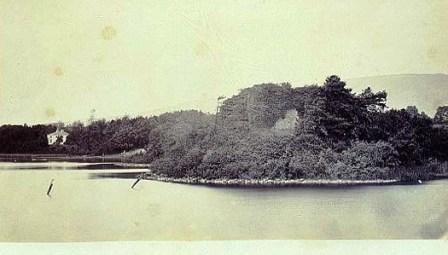
|
| Aghacashel | According to the National Inventory of Architectural Heritage Aghacashel House was built c. 1800. At the time of Griffith's Valuation it was occupied by Charles Rolleston and was valued at £14. In 1837 Lewis records it as a Johnston residence. In 1814 it was the home of Joseph Johnston. By 1906 it was still valued at £14 and was the property of Thomas Guckian. It is still extant. |
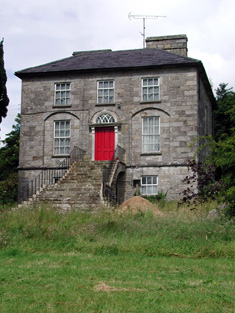
|
| Port | Port is given as the address of Guy Cooper in 1814 while in 1856 the house at Port was occupied by George Latimer. | |
| Glasdrumman | The property at Glasdrumman in the parish of Fenagh, belonging to William Lewis, described as "in chancery" was leased to John Murphy in 1856 when it was valued at £8. It is still extant and occupied. |
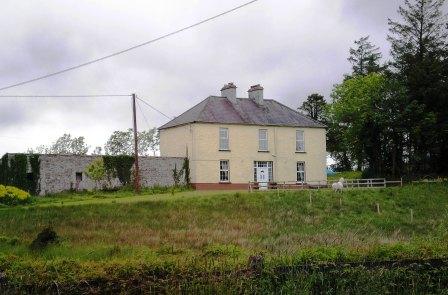
|
| Fenagh Glebe | Rev. George Beresford held the Glebe at Fenagh, from the Ecclesiastical Commissioners at the time of Griffith's Valuation when it was valued at £16. The Buildings of Ireland survey states that the house was built c. 1829. It also records that the nearby church, built c.1790, was extended in the 1850s by the Pack Beresford family. Both buildings are still extant and in use. |

|
| Drumhierny Lodge | At the time of Griffith's Valuation William LaTouche was leasing this property, valued at £15, to Francis LaTouche. Originally built by David La Touche and lived in by successive generations of the family until the early years of the twentieth century. Sold in 1912 and now a ruin. | |
| Shannon Lodge | Alexander or Alick Faris leased property from the St. George estate in Carrick-on-Shannon. His wife Diana is recorded as the occupier of the house known as Shannon Lodge at the time of Griffith's Valuaiton, when it was valued at £30. Pyle states that after Alick Faris died Diana married a French aide of the St.George's, Victor de l'Herrault. She resided at Shannon Lodge for some time but after her second husband died she moved to Sligo and rented Shannon Lodge to her brother, James. She died in 1890. |
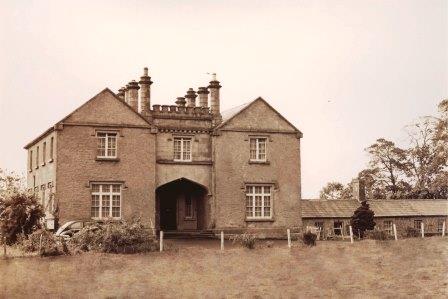
|
| Letterfine/Letterfyne | Letterfine was occupied by the representatives of Mary Anne McNamara in the mid 1850s. In 1814 it was the address of Tobias Peyton. Taylor and Skinner and Wilson both record it as a seat of the Reynolds family in the 1780s. It is labelled Letterfine House on the 1st edition Ordnance Survey Map but is not visible on the later 25-inch edition. In 1943 the Irish Tourist Association survey recorded no trace of the house. | |
| Bunnybeg House | Lewis records Bonnybeg as a seat of the Lawder family in 1837. At the time of Griffith's Valuation it was owned by William Lawder and was valued at £10. A modern house and farm exist at the site now. | |
| Drumrahan | Lewis records Drumrahan as a seat of the O'Brien family in 1837. At the time of Griffith's Valuation it was being leased by John O'Brien to Phillip Taggart and was valued at £25. Entrance gates have been reconstructed but the original house is not extant. | |
| Headfort/Headford | At the time of the first Ordnance Survey the property at Headford was described as belonging to "S. White, non resident, property going into decay". In the seventeenth and eighteenth centuries it was a seat of the Jones family. Wilson, perhaps incorrectly, refers to it as the seat of Mr. Johnston, in 1786. The house was immortalised by Anthony Trollope in his novel ''The McDermotts of Ballycloran''. The ITA survey of the 1940s recorded it as in ruins and it remains as an ivy-covered ruin today. It was pointed out for this survey as "the ruins of that auld Ballycloran Castle"! |
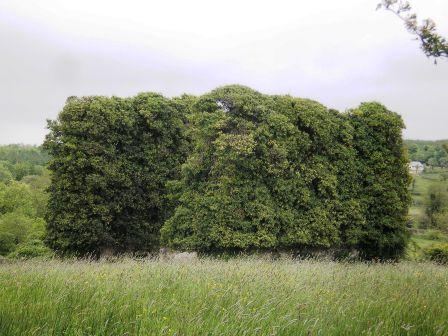
|
| Ardcarne House | At the time of Griffith's Valuation John Hackett was leasing Ardcarne House, valued at £25, from Viscount Lorton's estate. The house is still extant and used as a farmhouse. |

|
| Glencarne House | At the time of Griffith's Valuation Samuel Handy was leasing a house valued at £18 at Ardcarne, barony of Boyle, from Viscount Lorton's estate. Glencarne is now a guesthouse. |

|
| Castle Island | Also known locally as the Rock of Lough Key, at the time of Griffith's Valuation Viscount Lorton's estate owned a house on Castle Island valued at £14. The original building on the island was a medieval stronghold of the McDermott family to which additions were made in the early 19th century. Renovation work was taking place on these buildings in 2007. |

|
| Ardcarn Glebe | At the time of Griffith's Valuation Viscount Lorton was leasing the Glebe House in Ardcarn parish to Rev. George Griffith when it was valued at £12. It is still extant and is part of a large farming enterprise. |

|
| Grevisk | At the time of Griffith's Valuation Thomas Phibbs Peyton was leasing a house at Grevisk, valued at £10, along with 100 acres, from Viscount Lorton's estate. The Census of 1749 recorded Grevisk as the home of John Nesbit. It is still extant. | |
| Knockvicar | At the time of Griffith's Valuation Charles J. Peyton was leasing a house at Knockvicar, parish of Ardcarn, valued at £15 to Edward Jones. Lewis records the house as the seat of C.J. Peyton in 1837. In 1814 it was the seat of Randal Peyton. | |
| Oakport | Oakport was the home of the Reverend William French, fourth son of John French of French Park, in the early 18th century. At the time of Griffith's Valuation, Oakport House, the property of Thomas William Goff, is recorded as "unoccupied". A house is still extant at the site. | |
| Riversdale House | John R. French was leasing a house valued at £25 at Kilateasheen from the Ecclesiastical Commissioners at the time of Griffith's Valuation. There is no substantial house marked on the 1st edition OS map. This house is still extant and known as Riversdale House. |
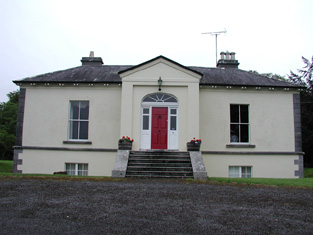
|
| Killukin Glebe/Killukin House | At the time of Griffith's Valuation, Archdeacon Henry Irwin was occupying the Glebe House in the parish of Killukin, valued at £11. This property is labelled Killukin House on the 25-inch Ordnance survey map of the 1890s. A house is still extant at the site. | |
| Danesfort (Roscommon) | At the time of Griffith's Valuation, William Roycroft was leasing the house at Danesfort, valued at £12, from Miss M. O'Connor. In 1814 it was recorded as the seat of Gilbert Roycroft. Lewis also describes "Deansfort" as the seat of the Roycroft family in 1837. Keenehan and others state that the Roycroft house was demolished c.1890 and another house constructed on the site by the Duignan family. | |
| Knockranny | At the time of Griffith's Valuation Knockranny House was leased by Joseph Bennett Little from the Tenison estate and was valued at £25. Lewis recorded the house as the seat of the Dodwell family. Knockranny is still extant but derelict. |

|
| Greyfield | At the time of Griffith's Valuation, Greyfield, barony of Boyle, was leased by Robert O'Donnell from the O'Reilly estate. It was valued at £10. Lewis also records Greyfield as the seat of the O'Donnell family in 1837. The original house is no longer extant. | |
| Cloongownagh | Thomas and Andrew Kirkwood had houses in this locality in 1814. Thomas resided at Hermitage and Andrew at Lakeview. At the time of Griffith's Valuation Andrew Kirkwood was occupying a property at Cloongownagh, barony of Boyle, valued at £13. Keenehan and others state that Cloongownagh House was built in 1690. It was occupied by the Kirkwood family until 1939 when Col. Moore Kirkwood sold the house and 109 acres. The house is still extant and occupied and is now part of a farm. | |
| Woodbrook House | Keenehan and others state that Woodbrook House was built around 1780 by the Phibbs family although there may have been an earlier house on the site. The Kirkwood family purchased the property sometime in the early nineteenth century. At the time of Griffith's Valuation Sarah Mary Kirkwood was leasing a house at Usna, barony of Boyle, valued at £14, from Robert H. Brewster French. From the 1890s-1911 Woodbrook was a very successful racing stables run by Colonel Tom Kirkwood. Life in the house in the post-WWI era has been made famous by the memoir ''Woodbrook'' written by the Scottish author David Thomson, a tutor to the daughters of the family. In 1946 over 50 acres of the estate was sold to the local golf club while the Land Commission subsequently divided the remainder. Woodbrook House is still extant. | |
| Springfield House | At the time of Griffith's Valuation, John Keogh was leasing a house at Cultycuneen, barony of Boyle, valued at £13, to Joseph Backhouse. Keenahan and others state that this house was built by the Backhouse family in the 1790s. It remained in the family until the mid twentieth century. It is still extant and has been recently refurbished. | |
| Hughestown | The seat of the Mulloy family is described as Hughestown but at the time of Griffith's Valuation the buildings at this location are described as "offices" and have a low valuation. C.M. Mulloy was resident at "Husetown"in 1749. Wilson refers to Hughes-town as the seat of Mr. Molloy in 1786. In 1814 Hughestown was the seat of Mulloy McDermott. | |
| Ellesmere | Harloe Powell was leasing a house valued at £18 at Ardcarn, barony of Boyle, from Viscount Lorton's estate, at the time of Griffith's Valuation. This house is still extant and occupied. |

|
| Lyonstown | At the time of the first Ordnance Survey a large ruin, said to have been the residence of the Lyons family, was in the possession of the O'Donnell of Greyfield estate. | |
| Coote Hall | In the seventeenth and eighteenth centuries Coote Hall was owned by the Coote family. The 4th and 5th Baronets, both named Charles, lived there and it was one of the houses O'Carolan visited and for whom he composed tunes. It was bought by Maurice O'Conor in the 18th century and later again by the Barton family. There is still an extant house at the site. |
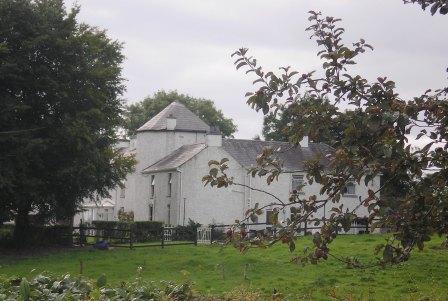
|
| Mount Allen House/Lough Allen Cottage | Lewis records "Lough Allen Cottage" as the seat of Hugh McTernan in 1837. At the time of Griffith's Valuation, this townland was leased by Richard H. Gorghes from Arthur O'Conor. It included a house valued at £7 10s. This building is labelled Mount Allen House on the 25-inch Ordnance Survey map of the 1890s. | |
| Charlestown House | In 1786 Wilson refers to Charlestown as the "the fine seat of Mr. King, most delightfully situated on the Shannon". The first Ordnance Survey map marks both Charlestown House and Charlestown Old House closeby at M984 976. Valued at £46 at the time of Griffith's Valuation. In 1894 Charlestown was the residence of Sir Gilbert King. The house is no longer extant but extensive estate architecture survives. |

|
| Flanker House | The Walsh estate, including Drumsna House, was advertised for sale in the Landed Estates' Court in 1861. The sale notice describes the dwelling house as "handsome and commodious" with a large walled garden. At the time of Griffith's Valuation Mary Anne Walsh was leasing the house, valued at £22 from Josias Rowley. The accompanying map indicates that it was called Flanker House. In the 1870s several members of the Keogh family, with an address at Flanker House, Drumsna, held property in county Roscommon. |

|
| Holywell | Holywell was built in the 1790s. In the early nineteenth century it was leased from the St. George estate by the Dockery family who in turn leased it to the Munns family, doctors in Carrick-on-Shannon. It was later the home of the Kiernan family and is now a country guesthouse. |

|
| Caldragh | Eliza Lawder was leasing a house valued at £7 10s at Caldragh, parish of Kiltoghert, from George Muntz at the time of Griffith's Valuation. In 1837 Lewis recorded it as the seat of the McDermott family. This house is still extant and run as a guesthouse by the Jackson family. |
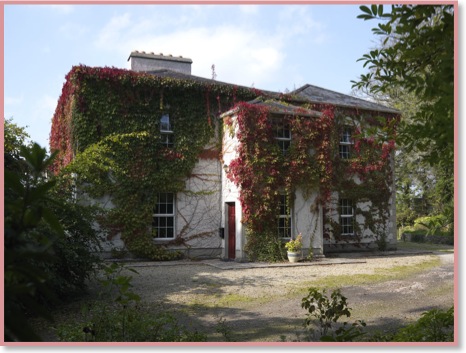
|
| Drumdartan Glebe | At the time of Griffith's Valuation, Daniel Etough was occupying the house at Drumdartan Glebe valued at £16. In 1837 Lewis had recorded it as a residence of the Percy family. The property is now derelict. | |
| Cartown | In 1783 Taylor and Skinner recorded Cartown, close to the town of Carrick-on-Shannon, as a seat of the Cunningham family and Wilson, writing in 1786, also refers to it as the seat of Mr. Cunningham. At the time of Griffith's Valuation George Church was in possession of a property in this townland, valued at £12, described as "unfinished". The house shown on the 25-inch Ordnance Survey map of the 1890s is substantially larger than the 18th century house. The house now at this site has had commercial premises attached to it but is still extant. |
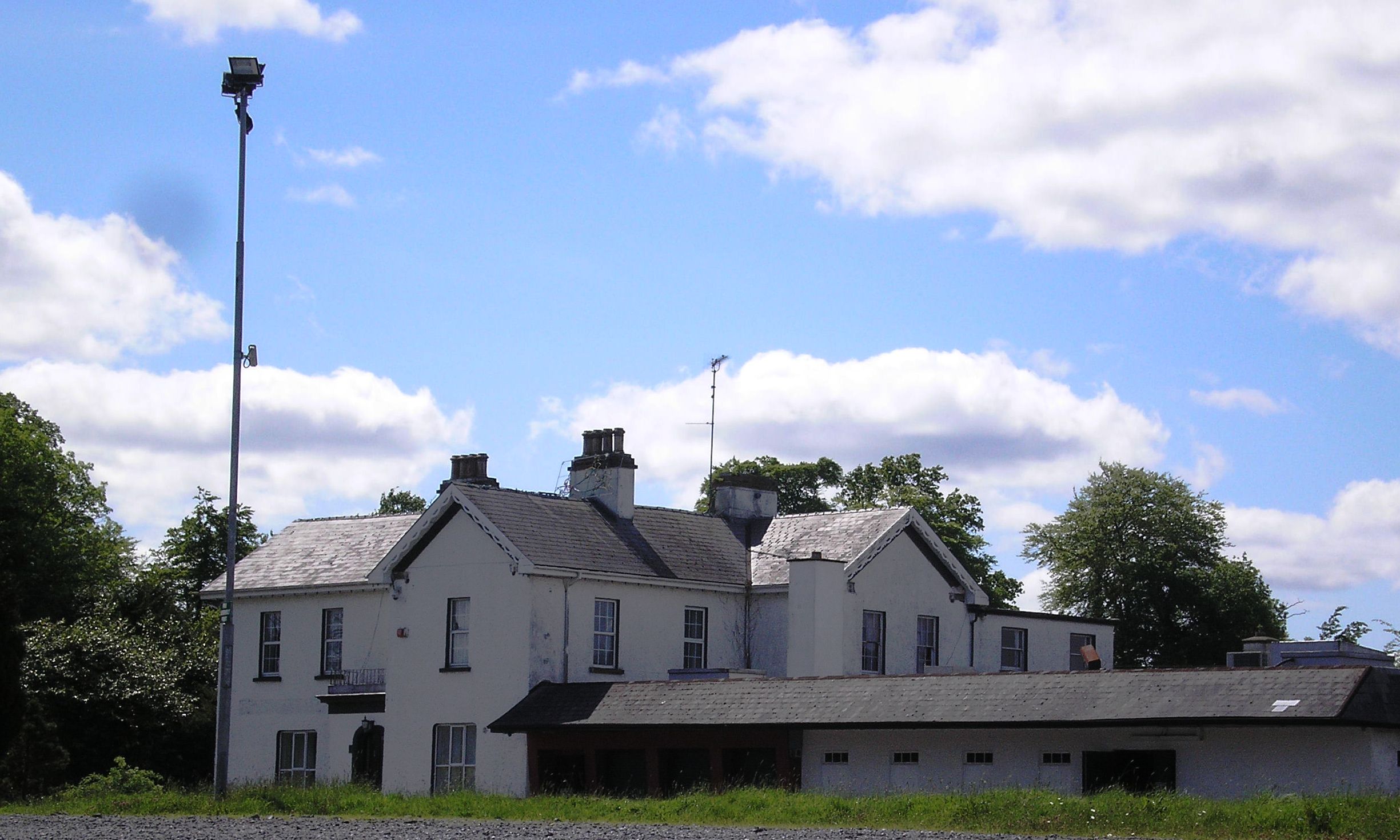
|
| Drumliffen Glebe | At the time of Griffith's Valuation Rev. Wm. Percy was leasing a property valued at £12 at Drumliffen Glebe, barony of Leitrim, from the Ecclesiastical Commissioners. The property is still extant and part of a farm. | |
| Hartley | At the time of Griffith's Valuations Charles St. George was leasing a house valued at £10 at Hartley, barony of Leitrim, to Robert Burns. It is unclear if this house has survived due to dense forestry and building of modern mansions. | |
| Holly Park (Leitrim) | In 1786 Wilson refers to a house close to Leitrim village as the seat of William Houghton. He may be referring to the house named on the 1st edition Ordnance Survey map as Holly Park. At the time of Griffith's Valuation Francis La Touche was leasing this property, valued at £4, at Tullylannan, to Edgar Macklin. Extensive redevelopment has taken place in this area | |
| Carrickard | At the time of Griffith's Valuation, Rev. Arthur Hyde was leasing a house at Carrickard, barony of Tirerrill from the estate of Robert Gough. The house was valued at £8. | |
| Andresna | Meredith Thompson was leasing a property valued at £6 at Andresna, barony of Tirerrill, to William Thompson at the time of Griffith's Valuation. | |
| Castlefield House | At the time of Griffith's Valuation Meredith Thompson, senior, was occupying a house valued at over £5 at Anresna, barony of Tirerrill. This appears to be the house marked on the OS map as Castlefield House, on the shores of Lough Arrow. McTernan notes that it later came into the possession of the Acheson family who sold it in 1935. It is still extant but in 2009 was unoccupied. | |
| Belmont | At the time of Griffith's Valuation Mary Anne Walsh was leasing a property valued at £17 to Hugh Byrne at Drumsna, barony of Leitrim. In June 1883 Gerald F. Walsh offered for sale the property in Drumsna known as Belmont. Modern housing now occupies the site. | |
| Gallowshill | A house built for the St George family at the end of the eighteenth century but used as a hospital for the Carrick-on-Shannon area until the 1940s. |

|
| Straduff Lodge | Patrick Martin was leasing a property valued at £3 from the Keogh estate at Straduff, parish of Kilmactranny, at the time of Griffith's Valuation. This property appears on the 1st edition OS map as Straduff Lodge. It is no longer extant. | |
| Cloontykilla Castle | This building was constructed after the publication of the first Ordnance Survey Map. It appears to have functioned as a shooting/fishing lodge for the King estate. It is now a ruin. |
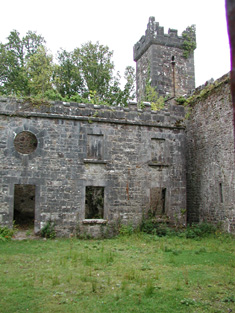
|
| Grouse Lodge | In 1786 Wilson refers to Grouse Lodge as the seat of Mr. Seily. At the time of Griffith's Valuation, this townland was held by the Johnston estate but there is no property with a substantial valuation. The house is shown on the 1st edition Ordnance Survey map but a larger house appears to have been constructed later on an adjacent site as shown on the 25-inch map of the 1890s. This property is still extant. |

